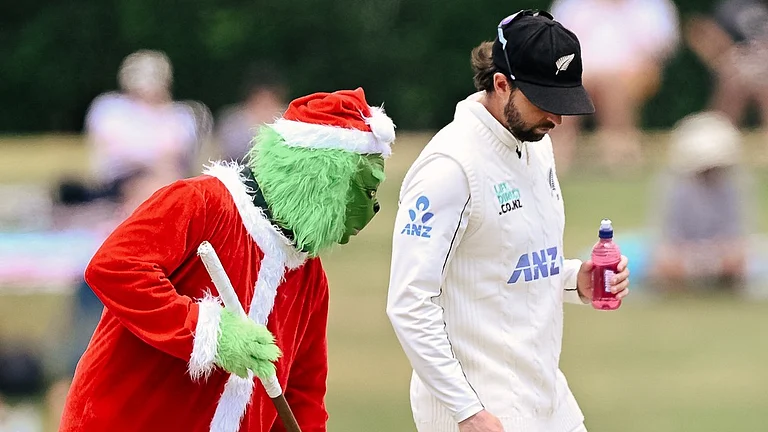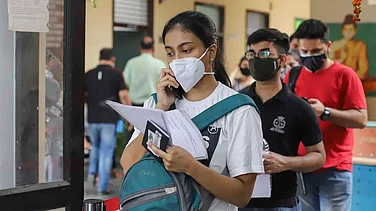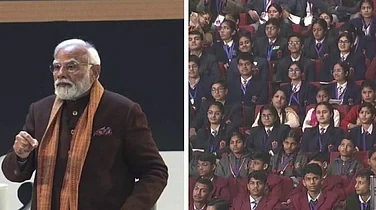For a student belonging to a middle-class family in India, the dream of a foreign degree comes with several caveats. To bring that dream within the reach of the masses, the New Education Policy, 2020 had taken steps towards internationalisation of education in both higher and school education. The latest push in that direction came in the form of the University Grants Commission (UGC) facilitates collaborations with foreign universities through a special regulation.
In April this year, the UGC notified the University Grants Commission (Academic Collaboration between Indian and Foreign Higher Educational Institutions to offer Twinning, Joint Degree and Dual Degree Programmes) Regulations, 2022. The statutory body had already eased rules for collaborations between Indian and foreign higher education institutions (HEIs) last year. The notification also came around the time when the UGC had announced that students could voluntarily choose to pursue two degrees of the same level at the same time from recognised institutes in the country. While some have their hopes pinned to the collaborations with employment in focus, experts also have their reservations about their practicality.
Contours Of Collaborations
As per the UGC regulation, Indian colleges and universities will now be able to look at collaborations with foreign universities over three kinds of programmes—joint degree, dual degree and twinning degree.
Under the joint degree, the curriculum would be set jointly by the two collaborating HEIs. The degree would be awarded by the two HEIs with a single certificate. Students will have to get at least 30 per cent of the total credits from each institute. In the case of a doctoral degree, students will need to have a supervisor at both the institutes and spend a minimum of one semester in each HEI, submitting a single thesis adhering to a framework jointly devised by them.
The dual degree would also be jointly designed and offered by the two collaborating HEIs in the same disciplines or subject areas and at the same level. Unlike the joint degree, two degrees will be awarded by both the HEIs, separately and simultaneously. The UGC makes it clear that the programme should not be construed as two-degree programmes in separate disciplines or subject areas at different levels being pursued simultaneously. Students will also have to meet the admission requirements of both the institutes and apply to them and be admitted separately and will have to earn at least 30 per cent of the total credits from the Indian institute.
The final kind, the twinning degree, would be an arrangement where students enrolled with an Indian HEI can undertake their programme of study partly in India, complying with relevant UGC regulations, and partly in the foreign HEI. The degree, however, would be awarded by the Indian institute only and credits earned by the student from the foreign institute will not exceed 30 per cent of the total credits for the programme.
The UGC has also approached ambassadors of 63 different countries for help and support to solidify the steps taken for international collaborations.
But, will it be beneficial for students? Professor W.N. Gade, former vice-chancellor of Pune University, and Professor A.S. Brar, pro-chancellor of Sri Guru Granth Sahib World University, both feel that it needs to be looked at from a larger perspective instead of taking it as just a collaboration of two HEIs.
As they rightly point out, many factors need to be considered before taking such steps.
Opportunity Up For Grabs
Speaking about students, Anil Meghwal, a Bachelor of Science student at Samrat Prithviraj Chauhan Government College, Ajmer, says, “If our colleges or university successfully collaborates with any of the renowned HEIs from abroad, then the level of education and experience that we get will surely improve and it will also provide us the chance to get hired not only in India but also overseas.”
Concurs Raj Das, global co-founder and CEO of Hirect India, a chat-based hiring platform. “Yes, of course, the initiative to collaborate with international colleges on education has an impact on the employment criteria. The programme provides exposure to students and educates them to deal with difficulties that are faced in the international market,” he says.
The programme will also be a gamechanger for students who want to study abroad but cannot because of financial constraints, as Ashish Fernando, founder and CEO, iSchoolConnect, an ed-tech platform that helps students apply to universities abroad, mentions. “Indian students would gain an international perspective without having to leave the country,” he adds.
Elusive Eligibility Mark
Going international, however, will not be easy for either students or the Indian HEIs. As per the UGC, the Indian institutes that want to participate in the three programmes have to be accredited by the National Assessment and Accreditation Council or any other agency authorised in this behalf, with a minimum score of 3.01 on a 4-point scale; or figure in the top 1,000 of the Times Higher Education or the QS World University ranking or the top 100 in the university category of the National Institutional Ranking Framework at the time of application.
The UGC’s eligibility criteria make sure that only the top institutes get to participate in the programmes, leaving out a big population of students that find them inaccessible over either really high cut-offs or fee structures. Apart from that, while considering any of these degrees, students will also have to make sure that they are eligible to get into both the collaborating HEIs.
When it comes to the fee structure of the programmes, the UGC, in the regulation, has said, ”The fee structure should be reasonable so as to make quality Higher Education accessible and affordable to all sections of the society.(sic)” At the same time, it also says that the fees, as applicable for the entire duration of the programme, including courses imparted by the foreign HEI, will be made public at the time of admission, not indicating certainty.
Prof. Gade says that there are bigger problems like shortage of professors that need to be addressed first while maintaining the quality of higher education. Quality education in rural India should be targeted before going international so that education within India can be strengthened while collaborating overseas, he adds. “Otherwise, sorry to say, we are not yet prepared for this step,” says Prof. Gade.
He opines that rather than teaching students numerous subjects, students must be made experts in their particular fields and research must be promoted in their curriculum. “We need to emphasise quality research,” he adds.
The collaborations will be unidirectional and will lead to a huge outflow of students, feels Prof. Brar. He says that the performance of both the collaborating HEIs should be monitored, and students and universities of similar calibres must collaborate to make for meaningful collaborations. That, he says, will be difficult when India is still not able to provide its students with successful international exchange programmes, and internationally acclaimed faculty and allocates inadequate funding for the educational infrastructure.
“Both private and government bodies are still not able to fund the education sector to be able to provide top-notch education. India needs to consider this before going international. Although, we cannot isolate ourselves from the international environment and need to learn as we go along,” concludes Prof. Brar, summing up the dilemma.





















